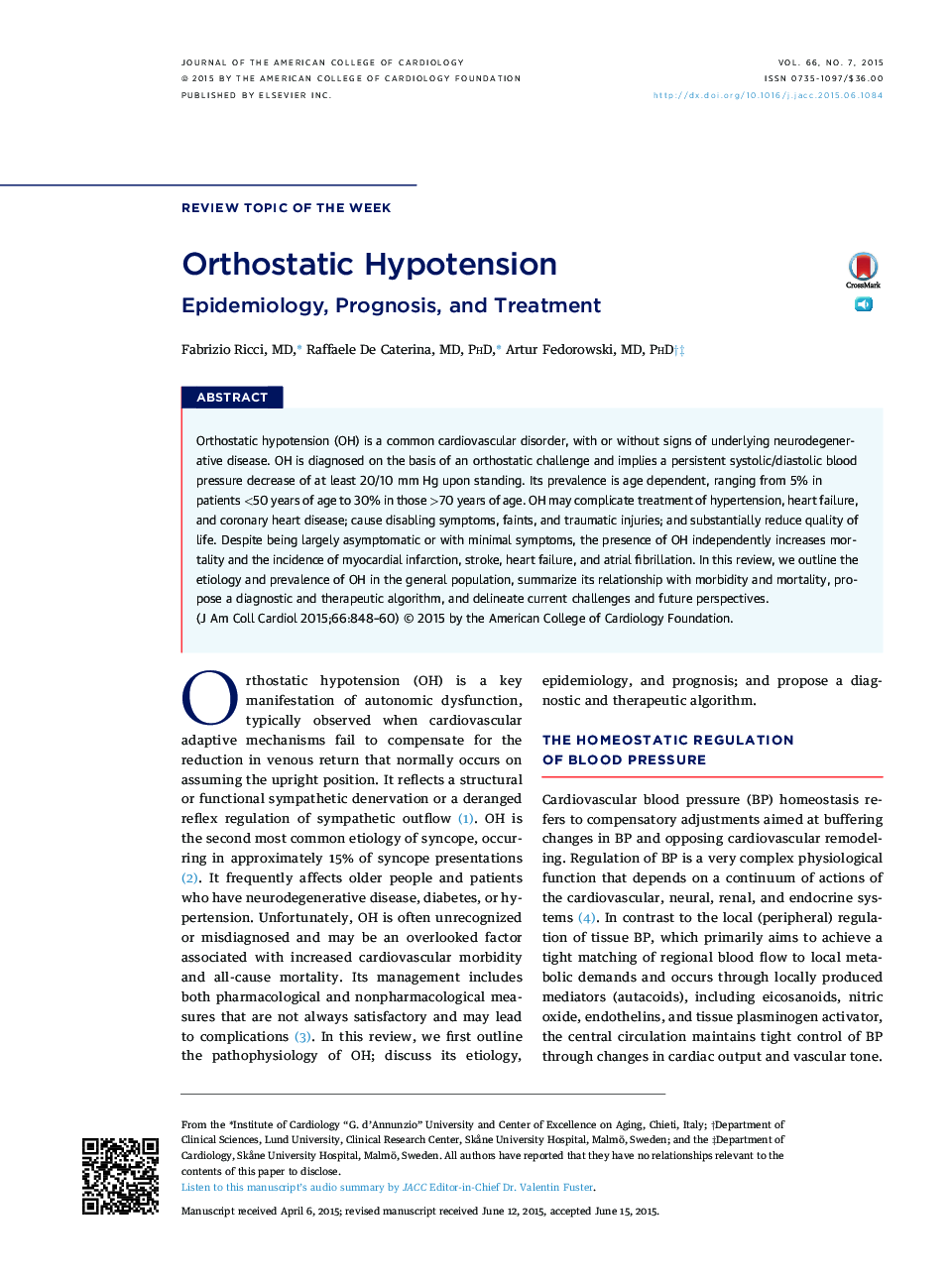| Article ID | Journal | Published Year | Pages | File Type |
|---|---|---|---|---|
| 5982483 | Journal of the American College of Cardiology | 2015 | 13 Pages |
Orthostatic hypotension (OH) is a common cardiovascular disorder, with or without signs of underlying neurodegenerative disease. OH is diagnosed on the basis of an orthostatic challenge and implies a persistent systolic/diastolic blood pressure decrease of at least 20/10 mm Hg upon standing. Its prevalence is age dependent, ranging from 5% in patients <50 years of age to 30% in those >70 years of age. OH may complicate treatment of hypertension, heart failure, and coronary heart disease; cause disabling symptoms, faints, and traumatic injuries; and substantially reduce quality of life. Despite being largely asymptomatic or with minimal symptoms, the presence of OH independently increases mortality and the incidence of myocardial infarction, stroke, heart failure, and atrial fibrillation. In this review, we outline the etiology and prevalence of OH in the general population, summarize its relationship with morbidity and mortality, propose a diagnostic and therapeutic algorithm, and delineate current challenges and future perspectives.
